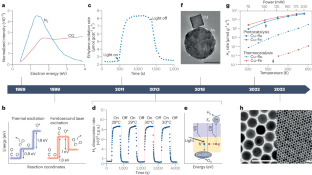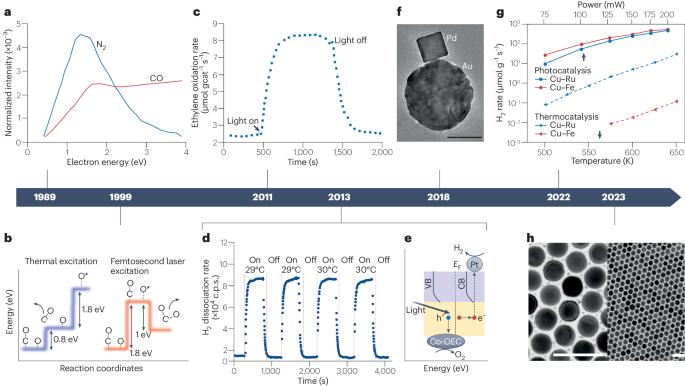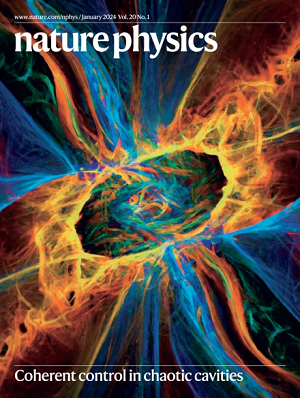质子-分子界面上的电子激发
IF 18.4
1区 物理与天体物理
Q1 PHYSICS, MULTIDISCIPLINARY
引用次数: 0
摘要
近来,用于太阳能到化学能转换的等离子体材料的兴起,使人们开始关注与金属分子界面上的电荷和能量流动相关的机制。理解这些效应之间的联系及其在吸附分子等离子激元中的作用一直是个挑战。在这篇综述中,我们致力于提供一个基于电子散射概念的总体框架,其中包含了金属-分子等离子界面上最重要的效应。首先,我们使用吸附剂诱导的表面电阻率模型来理解电子散射过程的化学特异性。然后,我们通过电子散射模型的视角分析了质子学中最突出的两种效应:化学界面阻尼和表面增强拉曼散射的化学模型。我们展示了大多数金属-吸附剂电荷或能量转移相互作用如何被映射为两大类--通过分子共振的电子散射和直接非共振电子散射。本文章由计算机程序翻译,如有差异,请以英文原文为准。


Electronic excitations at the plasmon–molecule interface
The recent rise of plasmonic materials for solar-to-chemical energy conversion places a focus on the mechanisms associated with charge and energy flow at the metal–molecule interface. Understanding the connection between these effects and their roles in the plasmonic excitations of adsorbed molecules has been challenging. In this Review, we strive to provide a general framework—based on the concept of electron scattering—that encompasses the most important effects at the plasmonic metal–molecule interface. First we use the model of adsorbate-induced surface resistivity to understand the chemical specificity of the electron scattering process. We then analyse two of the most prominent effects in plasmonics through the lens of the electron scattering model: chemical interface damping and the chemical model of surface-enhanced Raman scattering. We show how most metal–adsorbate charge- or energy-transfer interactions can be mapped into two major classes—electron scattering through molecular resonances and direct non-resonant electron scattering. Plasmonic excitations can enhance the interaction between a metal and molecules adsorbed onto its surface. This Review summarizes the different effects involved in this process and places them into a framework based on electron scattering.
求助全文
通过发布文献求助,成功后即可免费获取论文全文。
去求助
来源期刊

Nature Physics
物理-物理:综合
CiteScore
30.40
自引率
2.00%
发文量
349
审稿时长
4-8 weeks
期刊介绍:
Nature Physics is dedicated to publishing top-tier original research in physics with a fair and rigorous review process. It provides high visibility and access to a broad readership, maintaining high standards in copy editing and production, ensuring rapid publication, and maintaining independence from academic societies and other vested interests.
The journal presents two main research paper formats: Letters and Articles. Alongside primary research, Nature Physics serves as a central source for valuable information within the physics community through Review Articles, News & Views, Research Highlights covering crucial developments across the physics literature, Commentaries, Book Reviews, and Correspondence.
 求助内容:
求助内容: 应助结果提醒方式:
应助结果提醒方式:


